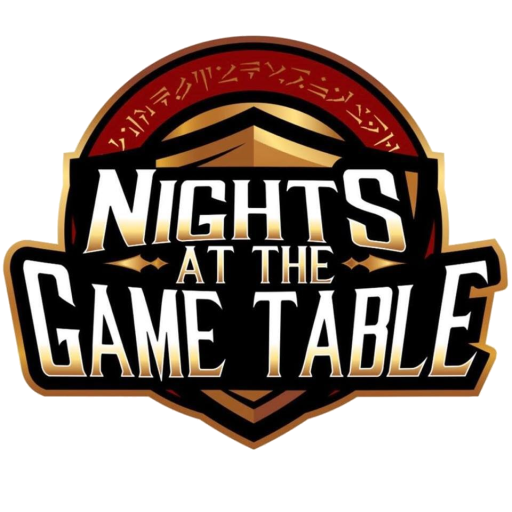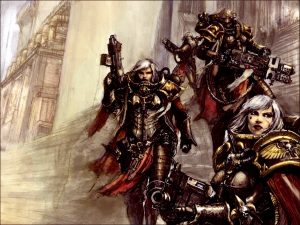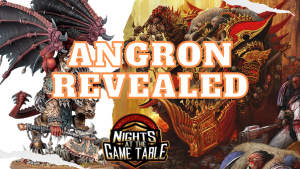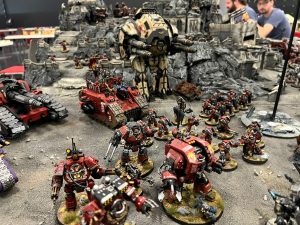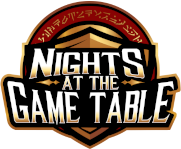In previous articles we’ve touched on the four kinds of gamers as well as the value of passive thinking. This week’s article, and the following several weeks’, will look to combine these two concepts, play to our strengths, and embrace our preferred playstyle. Specifically, for each playstyle archetype, we’ll be looking at two major pregame steps we can take to help improve our chances of success:
- Build a list that works in our preferred playstyle
- Establish a gameplan or script for how the list will work in various scenarios and matchups
We’re going to take the next four articles to go through list building and game planning for each of the four playstyles we’ve identified. We’ll go through list archetypes and then identify a specific example list. From there we’ll go through some game planning for differing opponents and scenarios for the example list.

This week, we will start by building toward an approach for a Warboss style. This playstyle is aggressive loose and fits someone who wants to dictate the pace of the game. It can often border on reckless if allowed to run without consideration. Armies that will be best for this player are ones where most units have redundancy and broad applications rather than specialized roles. To insure against the tendency toward recklessness, units that are durable will often be preferable to those that might hit harder, but are susceptible to counter attacks.

Some list archetypes for this playstyle are, in no particular order:
- The Horde – Fitting for a Warboss, a pile of Boyz, or any similar all out, body-heavy aggressive combat list that looks to pin the enemy in a corner and wear them down with sheer weight of bodies and dice.
- The Pile of Bricks – Rather than weight of bodies, this list archetype is one that fields a handful of absolute brick units that can take punishment and keep plodding forward.
- The Gunline – The title Warboss and theme of aggression make us think combat, but a gunline list is innately aggressive focused, and often features layers of redundancy so that the list “just works.”
As we’ve touched on, a Warboss style, left unchecked, can become reckless and unbalanced. Similarly, Warboss players can be tempted into the fault of focusing solely on their aggression of choice. By being mindful of our inclinations, we can identify where we might be going down a rabbit hole of redundancy for our preferred method of aggression, at the cost of balancing it with alternate methods of aggression. For example, if you favor gunlines, then just adding more guns instead of taking other elements that can make sure your guns are firing longer, like screens, forward elements, and counter-assault threats.
So now let’s look at a list that can be run extremely aggressively, as favors a Warboss general, but with lots of elements to counter-balance and fill gaps. Specifically, we’re going to look at Tony Kopach’s ATC list using Imperial Guard, Blood Angels, and Imperial Knights:
Catachan Brigade:

- Colonel ‘Iron Hand’ Straken
- Company Commander: Chainsword, Laspistol, Warlord, Kurov’s Aquila
- Company Commander: Laspistol, Power Fist
- 8x Infantry Squad: Mortar, Sergeant with Chainsword and Laspistol
- Ministorum Priest: Chainsword, Laspistol
- 2x Platoon Commander: Power Fist, Laspistol
- 3x Hellhound: Interno Cannon, Heavy Bolter, Storm Bolter
- 3x Heavy Weapons Squad: 3 Mortars
House Raven Super-Heavy Auxiliary Detachment:
- Knight Castellan: 2 Shieldbreaker Missiles, 2x Twin Siegebreaker Cannons
Blood Angels Battalion:
- 2x Captain: Jump Pack, Thunder hammer
- 3x Scout Squads: 4 Scouts with Bolters, Sergeant with Chainsword and Combat Knife
By default, we don’t tend to think of Imperial Guard as a combat focused army, but that is exactly what their primary role is in this list. Between Straken and the Priest, each guardsman has three Strength 4 attacks. The Commanders with Power Fists also have five S8 attacks each, and can use the character rules to stay safe as they march up the board behind the wall of punchy guardsmen. Clearing the path and midboard for them is the Blood Angels Scouts, who can deny forward deploying elements in the enemy army and force the action onto their half of the board. Last but definitely not least, is the Knight Castellan providing seriously beefy firepower to back up the guardsmen who will be moving up board.

With the list taken care of, let’s move on to game planning. There is a lot of redundancy and repeated efficiencies throughout the list, which allow for a balanced deployment as standard, with layers of elements surrounding the centerpiece shooting unit, the Castellan. Deployment can be shifted off of middle so as to get the Knight the most ideal firing lanes.
Order of deployment will usually be using the Scouts and Infantry squads spread out and overlapping so as to not commit to any one spot. There are so many drops in the list most opponents will be done deploying before this list commits to one particular part of the board, and can turn a balanced, even deployment, into a lopsided deployment that will look to hammer a portion of the enemy’s army before the rest of their forces can react and be brought to bear.
Part of the beauty of this list is that it does not need to change its overall deployment much whether it’s facing a combat focused or a shooting focused list. However, after deployment is where you’ll have the first major branch.
If facing a list that can outshoot this list from range, the gameplan becomes focused on closing the gap quickly and punching or hugging shooting elements. The Scouts can deploy aggressively in the midfield and get into the lines right away if needed. Using combined squads and the plethora of Orders available, the Infantry units can sprint up the board and present a wall of bodies that will be in range to charge turn two, with plenty of frighteningly punchy characters in their wake. Meanwhile, the Castellan can utilize the plethora of Command Points within this list to stay effective even as it gets focused down, and absolutely demolish key targets.

On the other hand, if facing a list with little shooting that just wants to get and range and outpunch even the punchiest guardsmen, the list can deploy a little further back, moving forward only slightly to create gaps between the solid lines of infantry. The opponent will have to cross the field quickly, but then be faced with a wall of guardsmen with another lying in wait just behind to counter-charge. Meanwhile, the 17 mortars will combo with the Castellan to rain down shots. Once the first wave breaks on the lines, the list can then use the mobility from orders and the Blood Angels characters to push back up the field and take control.
With these broad strokes of a gameplan in place, it then comes down to practice and learning some of the finer details. This list has a lot of models in it, so practice just the movement of this many bodies can become extremely important; the last thing you would want is to be accused of slow play. And our gameplan for countering assault-based opponents means we need the game to go at least five turns so we have time to reclaim the board after their initial assault crashes on our lines.
Specifically, we want to practice the following:
- Deployment: Have the order in which you want to drop units down pat. Also have tools or practice enough to leave room for your key elements which you want to deploy later, but need their priority spots.
- Stratagems: Identify the tiers of your stratagems and which you will want to use in which phases. The list we discussed has access to three different armies’ stratagems, and plenty of command points to use them. Split the stratagems into three categories: Usually, Sometimes, and Rarely. Then focus on memorizing at least the first two. For the Sometimes and Rarely category, knowing the specific situation in which you would want to use them is most important.
- Practice the main big moves: Specifically, for your two main gameplans, practice actually running through moving the models you have to implement that gameplan, be it moving forward aggressively, or creating defensive rings of models which cannot be breached by most combat units.
- Identify Secondary branches to the gameplan: We know the broad stokes, but practice scenarios where you need to change direction. For example, what are the audibles you can call if the opponent you expected to rush forward is instead hanging back and weathering your firepower? Similarly, what are other approaches you can take if you get alpha-struck so hard you lose what you consider to be your key pieces, whether it be the knight or the infantry units?
And there we have a blueprint for preparing and practicing to run an aggressive list. We crafted a list that has a degree of balance, a good bit of redundancy, and a lot of protection for key elements. We then identified the main game plans based on a couple broad scenarios, and then looked at what information and practice we would want to do to execute our game-plans.
Next week we will look at another playstyle, and pair it with another strong list and the approaches we can take to piloting that list with some success.
